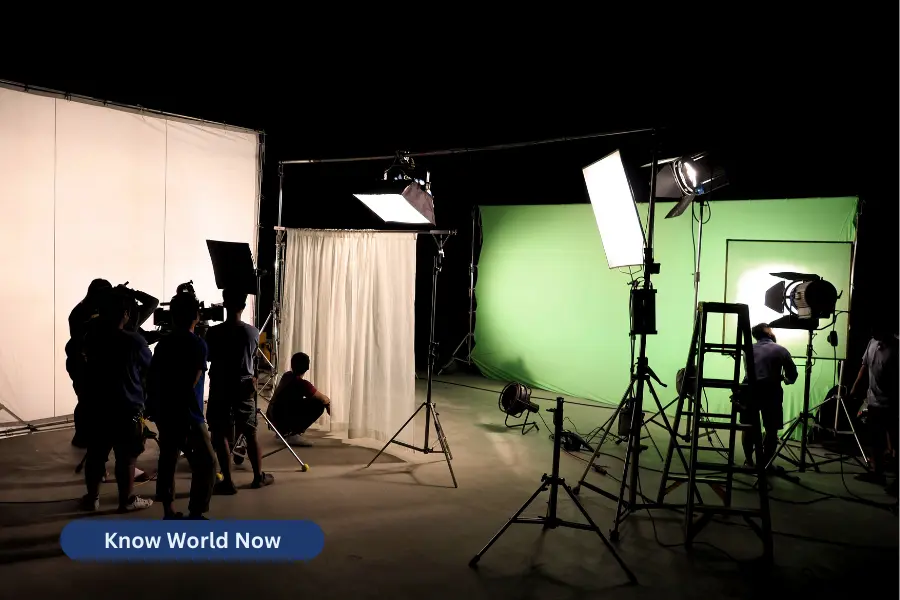Industrial video production emerges as an essential conduit bridging the industrial sector with its workforce, customers, and stakeholders.
Today, video production is more than capturing the nuances of your product or service on camera; it’s about crafting a narrative that resonates, educates, and inspires.
In this article, we’ll delve into the fascinating world of industrial video production, explaining the stages, techniques, and roles.
The Pre-Production Phase
Analyzing Demographics
Understanding the audience’s demographic is akin to piecing together a puzzle forming the foundation of industrial video production. It’s more than just determining age brackets or professional backgrounds; it’s about delving into the core of what intrigues, engages, and resonates with the viewers.
Age
Knowing the age range helps set the video’s tone, style, and complexity. A video aimed at young tech-savvy professionals may differ vastly from one targeting seasoned industry veterans.
Profession
Is the video intended for engineers, managers, factory workers, or sales representatives? Understanding their professional background helps you choose the language, terminologies, and visuals that speak directly to them.
Interests and Needs
What are their pain points, aspirations, or areas of interest? Grasping these nuances helps create engaging content that provides value to the viewer.
Conceptualizing the Idea
This process often begins with collaboration with experts, such as engineers and designers, who understand the subject matter intimately. By working closely with these professionals, you can grasp what needs to be conveyed, ensuring authenticity and relevance in the project you’re working on.
Creating Visuals
The next step is creating visuals. This is where the abstract idea begins to take tangible form. Utilizing mood boards, storylines, and sketches helps the team visualize the concept, bridging the gap between imagination and reality.
These tools act as a shared language, aligning all stakeholders and allowing for a more cohesive and effective production process.
The Production Phase
Location and Setting
The environment sets the stage for industrial video production. For a dramatic effect, it is vital to scout locations that resonate with the industrial theme, be it a factory floor, a state-of-the-art laboratory, or an abandoned warehouse. Above all, the location you intend to use should echo the subject’s authenticity and capture its essence.
Preparing the Environment
The preparation involves meticulous planning and arrangement of sets and props. Safety is paramount; all safety measures, from appropriate signage to emergency protocols, are essential to prevent any mishaps during the shoot.
Embracing Variety
Cinematography is an art form. Utilizing techniques like close-ups to show texture, panning shots to follow the action, and drone footage for breathtaking aerial views adds layers of visual intrigue. These varieties help the viewers feel the industrial world’s dynamism.
The Post-Production Phase
Editing and Sequencing
In the hands of a skilled editor, raw footage becomes a flowing narrative. It’s a process akin to sculpting, where each cut and splice is a meticulous decision.
Remember, trimming and arranging footage isn’t just about continuity; it’s about rhythm, pacing, and the subtle art of leading the viewer through a compelling journey.
Every scene and shot must contribute to the whole, weaving a seamless and engaging tale.
Enhance your videos with Sound.
The auditory layer is vital, whether it’s a poignant voice-over that adds depth, uplifting background music that sets the tone, or strategically placed sound effects that bring scenes to life. Work to create an auditory landscape that resonates with viewers, complements the visuals, and fills the space with emotion.
Visual Effects and Graphics
Incorporating computer-generated imagery (CGI) opens doors to creativity that can hardly be achieved otherwise. It’s the alchemy of turning pixels into visual magic, making the impossible possible.
Whether you intend to use it to illustrate complex industrial processes or create a hyper-realistic simulation, CGI is more than special effects; it’s a tool for storytelling that adds dimension and wonder.
Designing Attractive Graphics
Graphics and animations are the visual spices that can make content more appealing and understandable. They are not mere embellishments; they serve a purpose.
Whether simplifying a complex concept, highlighting key information, or adding visual flair, well-designed graphics blend art and communication. Aim to create visual elements that catch the eye and enhance understanding and retention.
The Role of Technology
Virtual Reality (VR) and Augmented Reality (AR)
As technology advances and societal values evolve, the fields of VR and AR and ethical and sustainable practices will continue to shape the future of industrial video production.
Embracing these elements enhances the content’s quality and impact and reflects a commitment to responsible and forward-thinking practices. Let’s explore how these technologies are making waves:
Creating Immersive Experiences
VR lets viewers enter a virtual industrial environment, offering a 360-degree view. It’s a tool that can provide hands-on training for workers, simulating real-world scenarios without the risks associated with live training.
Simulating Complex Processes
AR overlays digital information onto the physical world, helping visualize complex industrial processes. This can be incredibly beneficial for training and development, where AR can guide workers through intricate tasks, providing step-by-step instructions.
Enhancing Customer Engagement
These technologies can also serve as marketing tools. By offering virtual tours or interactive demos, potential clients can experience products or processes in a way that static videos or images cannot provide.
The applications of VR and AR in industrial video production are endless, ranging from remote collaboration to predictive maintenance visualizations.
Wrapping up
The landscape of industrial video production is ever-changing, and Media Borne is at the forefront of this evolution. From concept development to post-production, every stage is a dance of creativity and technology that transcends traditional boundaries and pushes the limits of what’s possible.
As we’ve seen, each phase is a world rich with detail and complexity, working in harmony to create something truly engaging.
Whether aimed at educating a workforce or wooing potential clients, the art of industrial video production continues to evolve, reflecting the ever-changing face of the industry itself.




![F95Zone Games - The Ultimate Guide for 2021 [F95Z Guide] 5 F95Zone Games](https://knowworldnow.com/wp-content/uploads/2021/07/ArTtW5LrK3b-z-0-y-637f48d86203817a9042a857.webp)